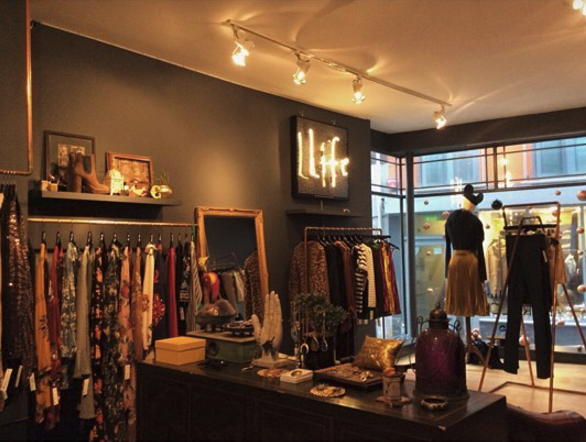Folkestone Triennial: How the Kent coast got its groove back
Many moons ago, Folkestone was the place to be – and now it’s enjoying a renaissance, with the Triennial in town at the moment

Your support helps us to tell the story
From reproductive rights to climate change to Big Tech, The Independent is on the ground when the story is developing. Whether it's investigating the financials of Elon Musk's pro-Trump PAC or producing our latest documentary, 'The A Word', which shines a light on the American women fighting for reproductive rights, we know how important it is to parse out the facts from the messaging.
At such a critical moment in US history, we need reporters on the ground. Your donation allows us to keep sending journalists to speak to both sides of the story.
The Independent is trusted by Americans across the entire political spectrum. And unlike many other quality news outlets, we choose not to lock Americans out of our reporting and analysis with paywalls. We believe quality journalism should be available to everyone, paid for by those who can afford it.
Your support makes all the difference.It might take some imagination now to think of Folkestone as a must-see destination, but back in the day, it was the place to go. Edward VII took his mistress Alice Keppel there; Charles Dickens savoured “the scent of thyme sweetening the breezes from the downs.” It had a pier, grand hotels and a busy ferry port back then – but then the pier was demolished, holidaymakers migrated to Spain, the ferries stopped when the Channel Tunnel opened and the town fell into gloomy neglect.
So why visit this doleful resort? Just as the opening of the railway in 1843 made the resort popular, a new fast train from London’s St Pancras has cut the journey to 55 minutes. What’s more, it’s currently home to the fourth Folkestone Triennial, its streets, beaches and cliff tops scattered with works of art by the likes of Antony Gormley and Mark Wallinger.
The triennial ends in two weeks time but an autumn day by the sea is hard to beat. No crowds, empty beaches, blustery skies and should it rain - heaven forfend - a Creative Quarter of galleries and craft shops, restaurants and coffee bars that has sprung up in narrow streets that lead to the harbour.

So, grab a map at Central station and set off on a hunt-the-artistic-thimble. Follow the dotted lines down side streets and peer in the windows of houses to spot mini sculptures made by Amalia Pica from sea shells.
The trail takes you down Tontine Street, once characterised by empty properties but now enlivened by several galleries and design studios. Small boats perched on poles, made by artist Jonathan Wright, are replicas of the 10 remaining fishing ships left in Folkestone; they lead to the half-empty harbour where the dwindling fishing fleet is enhanced by a floating pink house. This is one of six dinky “dwellings” scattered around by Richard Woods – making a comment about the middle-class longing for second homes.
A path planted with shrubs and flowers follows the old railway line on to the harbour arm, full of food stalls. In the the lighthouse is a champagne bar. Nearby, hidden away in the rusty cantilevers of the dock, a cast iron figure by Antony Gormley stares over the Channel.
Stride out along the stony beach, past a brightly coloured pavilion by Sol Calero and an upturned jelly mould with barley sugar columns by Turner Prize nominee Lubaina Himid which channels the connection of slavery to the sugar trade.

Keep going along the wooded glades and grottoes of the Lower Leas and up the zig-zag path to the grassy esplanade on the cliff top where Mark Wallinger created a piece of 19,240 numbered stones for the last triennial as a memorial to the soldiers who sailed to their death on the Somme from here in 1916.
For food, the harbour’s home to some good restaurants as well as food stalls (Blooms is good for fresh fish, while Drink Folkestone modestly claims to have “the best craft beer, wine and spirits in the world.”
And for shopping, there’s the cobbled Old High Street, home to independent shops like Atelier Feral Child, which sells bohemian clothes for women, and County Fayre, for home-made jams and chutneys. Many are taking advantage of the town’s Creative Foundation – the brainchild of former Saga insurance-to-cruises entrepreneur Roger Haan who acquired 90 properties to rent out at affordable rates.
But there is more to see. Tramp along Sunny Sands Beach, past a Martello tower emblazoned “Folkestone Is An Art School” by Bob and Roberta Smith and up the East Cliff to Wall by Alex Hartley – a striking mesh container, held back from teetering over the cliff by millstones made centuries ago.
In one direction you can see the White Cliffs of Dover; in the other is the harbour and more beaches. Folkestone couldn’t be more English – and, finally, it’s getting trendy, too.
Travel essentials
Getting there
Trails from St Pancras take 55 minutes including a change at Ashford and cost from £31.80 return.
Staying there
Revamped townhouse The Relish has doubles from £97, B&B.
More information
The Folkestone Triennial ends on November 5. folkestonetriennial.org.uk
Join our commenting forum
Join thought-provoking conversations, follow other Independent readers and see their replies
Comments